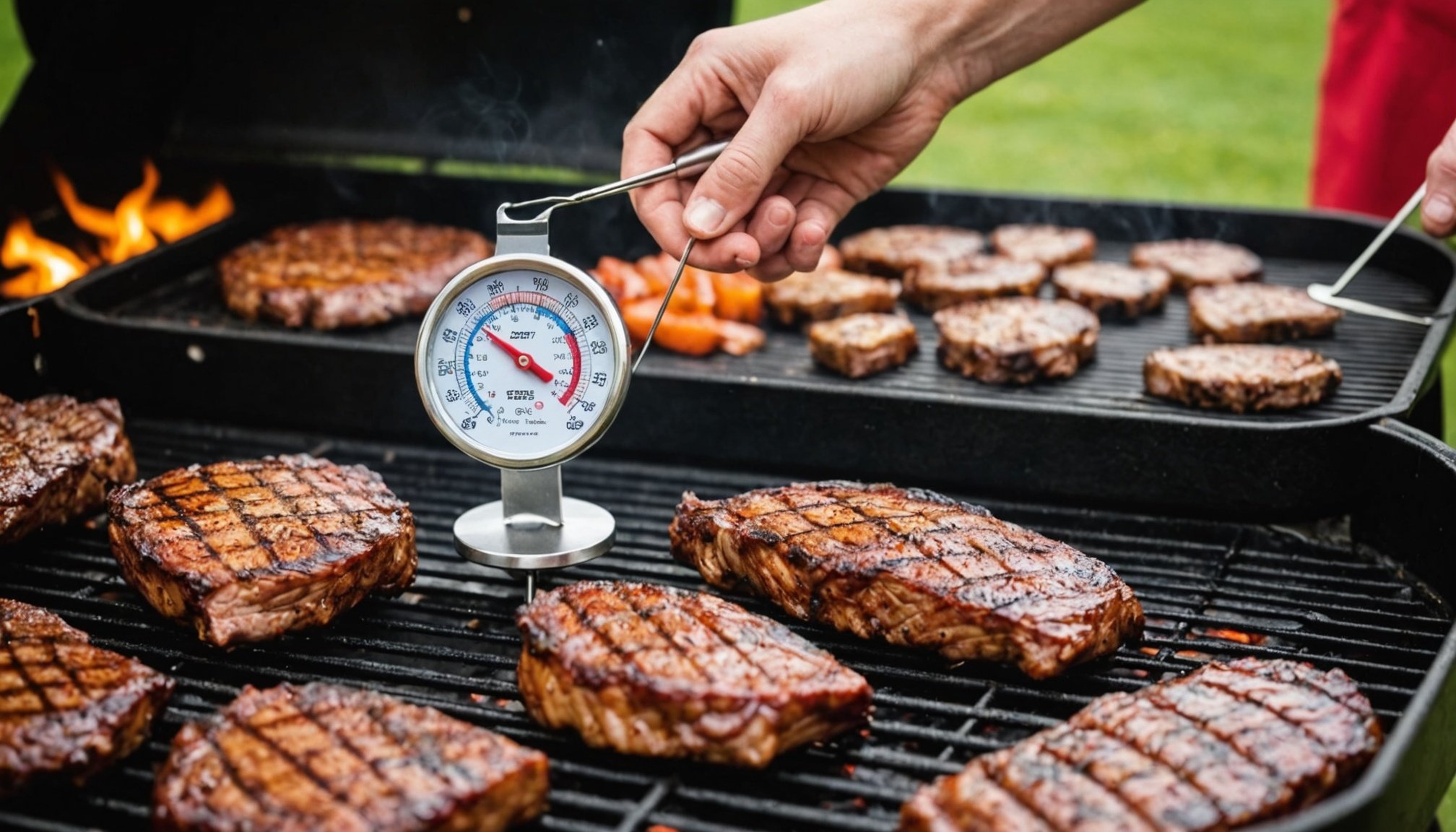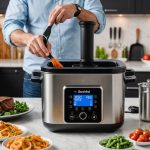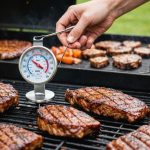Achieving BBQ mastery hinges on precise cooking techniques, with a meat thermometer being an essential tool. The right thermometer ensures that your meats reach the perfect internal temperature, preventing both undercooking and overcooking. Different features cater to various grilling styles and preferences. This guide highlights the must-have features to consider while selecting a meat thermometer, paving the way for exceptional BBQ results that impress friends and family alike. Elevate your grilling game and enjoy mouthwatering meals that are cooked to perfection.
Essential Features of Meat Thermometers
Understanding the essential features of a meat thermometer ensures that you achieve the perfect cook every time. Accurate temperature readings are crucial, as they determine the doneness and safety of your meat. A thermometer that is off by just a few degrees can mean the difference between a juicy steak and a dry one.
Also read : Essential Factors to Consider for Selecting a Top-Notch Electric Knife Sharpener
The ideal temperature range varies for different meats. For instance, poultry should reach at least 165°F, while medium-rare beef is best at 130-135°F. Having a thermometer that can accurately measure these temperatures is vital for both flavor and safety.
The probe length is another significant feature to consider. A longer probe is beneficial for larger cuts of meat, ensuring the thermometer reaches the center, while a shorter probe is suitable for thinner cuts or grilling.
Also read : Essential Factors to Consider for Selecting a Top-Notch Electric Knife Sharpener
Key Features to Consider
- Accuracy: Ensures precise cooking
- Temperature Range: Suitable for various meats
- Probe Length: Adaptable to different cooking methods
By focusing on these essential features, you can make an informed decision, enhancing your cooking experience and ensuring delicious results every time.
Types of Meat Thermometers
Understanding the various types of meat thermometers is crucial for selecting the right tool for your cooking needs. Each type offers unique features and benefits that cater to different preferences and cooking styles.
Digital vs. Analog Thermometers
Digital thermometers provide quick and accurate readings, often featuring a clear display and additional functionalities like timers. They are ideal for those who prefer precision and convenience. In contrast, analog thermometers, though more traditional, are valued for their simplicity and reliability without the need for batteries.
Instant-Read Thermometers
Instant-read thermometers are perfect for cooks who need immediate feedback. These thermometers provide readings in seconds, making them suitable for quick checks on steaks or chicken breasts. Their probe length is typically shorter, designed for thinner cuts of meat.
Wireless Meat Thermometers
Wireless meat thermometers offer the luxury of monitoring your meat's temperature from a distance. With a temperature range suitable for various meats, they allow you to multitask without being tethered to the grill or oven. This type is particularly beneficial for those who enjoy hosting and need to manage multiple tasks simultaneously.
- Digital: Quick, precise
- Analog: Simple, no batteries
- Instant-Read: Fast checks
- Wireless: Remote monitoring
Choosing the right type of meat thermometer enhances your cooking efficiency and ensures perfectly cooked meals.
Understanding Temperature Zones
Understanding the importance of temperature zones in BBQ cooking can transform your culinary results. Safe cooking temperatures are essential for ensuring meats are both delicious and safe to eat. For instance, poultry requires a minimum of 165°F to eliminate harmful bacteria, while beef can vary based on desired doneness levels.
Ideal Doneness Levels
Temperature zones significantly impact the cooking time and flavor of meats. For example, achieving a perfect medium-rare steak involves maintaining a temperature zone of 130-135°F. This ensures the meat remains juicy and tender. In contrast, pork is best enjoyed at a slightly higher temperature, around 145°F, to achieve the right balance of flavor and safety.
Impact on Cooking Time and Flavor
The concept of temperature zones is not only about safety but also about enhancing flavor profiles. Different meats require specific zones to unlock their full potential. Cooking within the right temperature zone helps in retaining moisture, ensuring that each bite is flavorful and tender.
- Poultry: Safe at 165°F
- Beef: Medium-rare at 130-135°F
- Pork: Best at 145°F
By mastering these temperature zones, you can elevate your BBQ cooking skills, delivering meals that are both safe and delectable.
Tips for Effective Thermometer Use
Enhance your cooking precision with these practical tips.
Best Practices for Inserting the Probe
Proper insertion of the thermometer probe is essential to avoid inaccuracies in temperature readings. Ensure the probe is inserted into the thickest part of the meat, avoiding bones and fat. This technique provides a true reflection of the internal temperature, ensuring your meat is cooked to perfection.
- Insert deeply for large cuts
- Avoid bones for true readings
- Center placement for even cooking
Timing Techniques for Checking Temperature
Timing is crucial when using a meat thermometer. Check the temperature towards the end of the cooking time to prevent overcooking. For larger meats, allow the thermometer to remain in place until the temperature stabilizes. This approach provides a more accurate reading and ensures optimal doneness.
Maintenance and Calibration Tips
Regular maintenance and calibration are vital for the longevity of your thermometer. Clean the probe thoroughly after each use to prevent cross-contamination. Calibrate your thermometer periodically by testing it in ice water, ensuring it reads 32°F. Proper care extends the life of your thermometer and maintains its accuracy.
User Reviews and Recommendations
Exploring user reviews can provide valuable insights for those in search of the best meat thermometers. These reviews often highlight features that users find most beneficial, helping potential buyers make informed decisions.
Top-rated Meat Thermometers on the Market
Customer feedback often points to models that balance accuracy and ease of use as the top-rated meat thermometers. Users frequently praise digital thermometers for their precision and convenience. A popular choice is the ThermoPro TP20, noted for its wireless capabilities and reliable performance.
User Experiences with Different Models
Varied user experiences reveal preferences for meat thermometers that offer diverse functionalities. Many appreciate instant-read models for their quick feedback, while others value the simplicity of analog thermometers. A common theme in reviews is the importance of durability and long-lasting battery life.
Price vs. Quality Analysis
When evaluating price vs. quality, users often emphasize the value of investing in a reliable thermometer. While some budget-friendly options perform adequately, higher-end models are typically favored for their accuracy and additional features.
- Accuracy: Essential for perfect cooking
- Durability: Key for long-term use
- Ease of Use: Important for seamless operation
Understanding these preferences can guide you in selecting the best meat thermometer for your needs.
Enhancing BBQ Skills with Thermometers
Master the art of BBQ with precision tools.
Role of Thermometers in Achieving Perfect BBQ Results
The role of thermometers in BBQ mastery cannot be overstated. They provide precise temperature readings, ensuring meats are cooked to perfection. By understanding the exact internal temperature, BBQ enthusiasts can achieve the desired doneness, whether it's a juicy medium-rare steak or perfectly tender ribs. This precision is crucial for enhancing BBQ skills and delivering consistent results.
Adjusting Cooking Techniques Based on Thermometer Readings
Utilizing thermometers allows for adjustments in cooking techniques. If the temperature is too low, increase the heat to avoid undercooked meat. Conversely, if it's too high, lower the heat to prevent drying out the meat. This adaptability is key in mastering BBQ techniques and achieving the perfect balance of flavor and texture.
Common Mistakes to Avoid for BBQ Enthusiasts
Avoid these common pitfalls to enhance your BBQ skills:
- Ignoring thermometer readings: Leads to inconsistent results.
- Not calibrating thermometers: Results in inaccurate temperatures.
- Misplacing the probe: Causes incorrect temperature readings.
By focusing on the role of thermometers, adjusting cooking techniques accordingly, and avoiding common mistakes, BBQ enthusiasts can elevate their skills and enjoy perfectly cooked meals every time.













